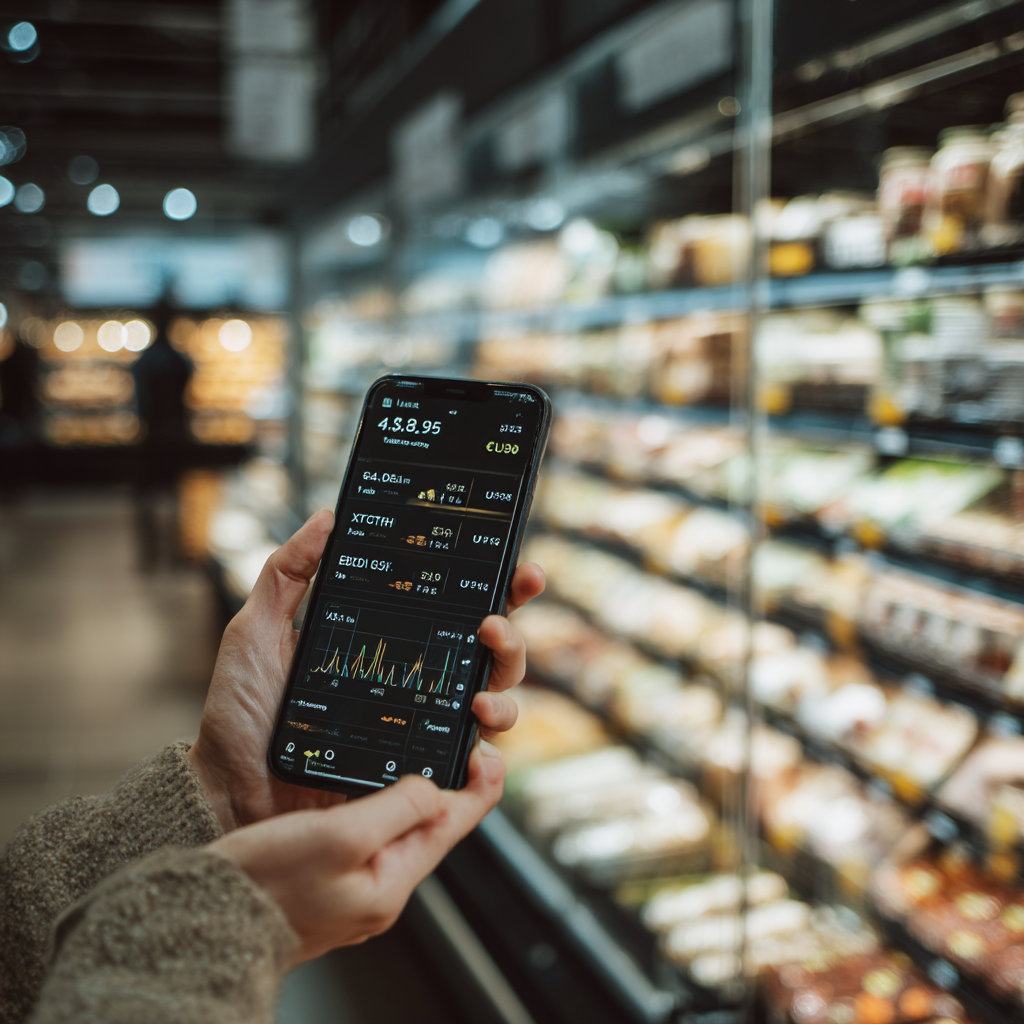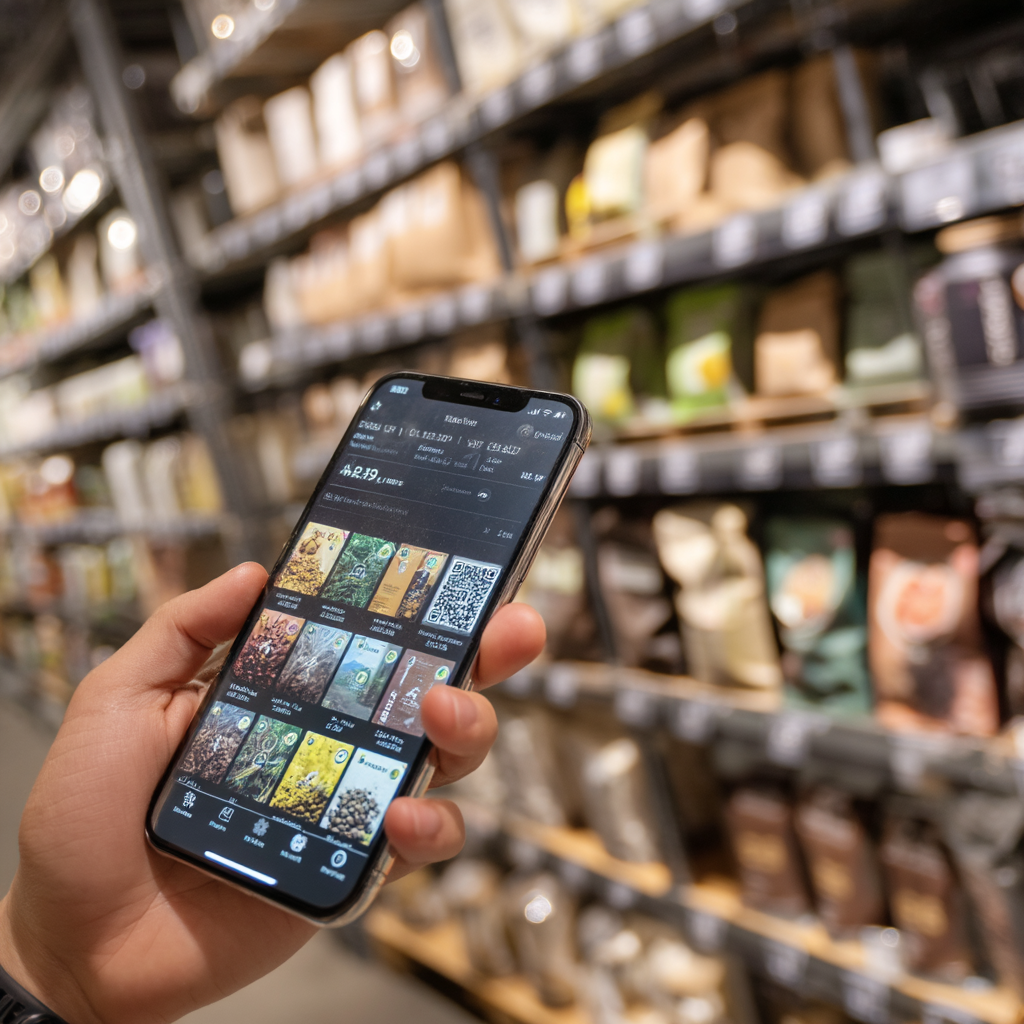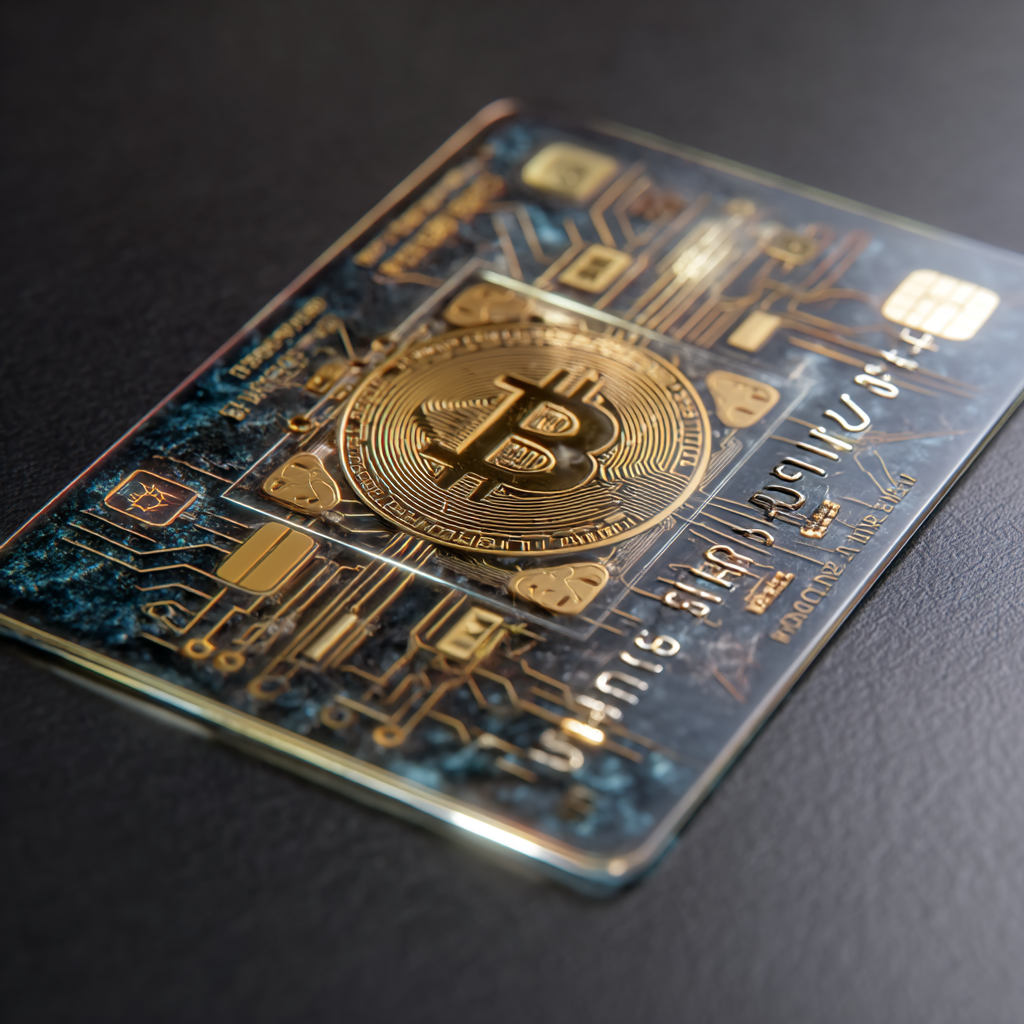Alternative Article Titles: The Hyperfungible Retail Paradigm; The Currency-Agnostic Marketplace; Post-Dollar Commerce: A Case Study; Retail Fungibility as Economic Dissent; The Multicurrency Storefront Model; The Store That Broke the Dollar; How to Exit the System While Buying Cereal ;The De-Dollarization Aisle; The Quiet Defection Store; Grocery, Gold, and Guerrilla Economics; Inside the Multicurrency Retail Model; Dynamic-Priced Shopping and the Fall of Cash; A Store with No Prices: How It Works; The App That Replaced Your Wallet; Shopping, But Make It Geopolitical; Checkout Revolution; Pay How You Like; The Dollar Optional Store; Swipe Anything; The Aisle of Many Nations
A new store’s opened up in Florida. Or maybe it didn’t exactly open—maybe it just quietly changed. The logo out front is the same, more or less. Some folks say it used to be a Kmart. Others swear it was a Winn-Dixie before that. Doesn’t matter. It’s called “EMBER” now, and it’s… different.
Bob, 72, white socks up to his calves, steps out of his Dodge Caravan, holding a reusable shopping bag and wearing a face like he’s already suspicious of something. He just wants frozen lasagna and ibuprofen. Maybe some cat litter. That’s it. But before he even reaches the sliding doors, a teenager in a corporate polo intercepts him.
“Hi, sir. Do you have the Ember app?”
Bob blinks. “I… just wanna get groceries.”
“Of course, of course,” the kid says with a reassuring grin. “It’s super simple. It’s to protect customers and reduce theft. You need to register before entry. It’s a membership store now.”
Bob frowns, squinting at the doors. “Since when do I need a membership to buy a loaf of bread?”
The kid gestures toward a kiosk where another retiree is getting walked through the steps. “You just download the app, scan your ID—driver’s license or passport—and you’re in. One time setup. After that it’s tap-and-go.”
“I gotta scan my what?”
“Your ID. For security and age verification. Don’t worry—it’s encrypted and safe. The app gives you store credit too. Pensioners like you get rewards. There’s a tier system. Real savings.”
“Cash still good?”
“Only when loading your wallet at the door, sir. You can’t pay with cash at checkout. That’s all automated now. Just select the items you take in the app while you shop, or scan the QR codes on the shelf. Your account handles the rest. You might get a spot-check at the exit.”
Bob doesn’t love it. But he doesn’t turn around either.
He sighs, pulls out his phone, fumbles for his glasses.
“Alright. Show me the damn app.”

“INSIDE EMBER” — Scene II: Shelf Shock
The automatic doors sigh open, and Bob walks into Ember, reusable tote hanging from his elbow, phone in hand like a tourist clutching a boarding pass. He freezes just past the entry threshold.
No prices.
Not a single printed number on the shelves. Just rows and rows of clean, black metal tags—each with a QR code. Shelves packed with the usual suspects: pasta, coffee, shampoo, baked beans, diapers. Everything looks ordinary… but eerily sterile.
Bob shuffles forward, suspicious. He pulls out his phone. The app’s already open. He raises the camera, squints, points it at a jar of peanut butter.
Ploop.
A little window pops up on his screen. The price appears instantly—bright, bold, easy to read. He lets out a low whistle.
But something’s… odd.
Beneath the dollar price, there’s a little dropdown list. Bob frowns and taps it. The price rearranges itself.
-
$4.62 USD
-
€4.18 EUR
-
₿0.000069 BTC
-
Ξ0.00097 ETH
-
₱268.10 MXN
-
¥33.48 CNY
-
0.91g Silver
-
0.02g Gold
-
5.14 DOGE
Bob blinks. “…the hell is Doge?”
He looks around. Everywhere—QRs, gliding animations, digital nudges. The signs don’t scream at you, they whisper in slick font:
“Silverado Ranch Breakfast Cereal – now extra good price in Doge!”
“Switch to ETH? This week’s best coffee deal is in Ethereum.”
“Use Gold? Check aisle 9 for bullion-backed discounts.”
Bob stares up the aisle. The cereal boxes glow with subtle edge-lighting. No prices on the packaging—just tasteful QR stickers, like labels on designer luggage. There’s even a section labeled:
“Multi-Currency Specials – Best Conversion Rates Live Now”
It’s still a grocery store. You can still buy toilet paper. But Bob knows, somewhere deep in his pension-trained bones, that something big just changed. He stands there blinking, feeling like he just walked into a bank disguised as a supermarket—or maybe the other way around.
He doesn’t hate it.
But he definitely doesn’t understand it.
He adjusts his grip on the phone, scans another can.
Ploop.
And down the rabbit hole he goes.

Scene III: Bob Pays in the Future
Bob finishes scanning the last item—some kind of artisan oat milk with a tagline about being “ETH-neutral.” He’s still getting used to how smoothly everything flows. No carts. No checkout belts. No lines. Every shelf has a scanner suggestion, every product is a conversation. His phone chirps softly with each tap, as if nudging him along.
He opens his cart summary on the app: 17 items, total value… wait, that’s less than he expected. Under the dollar total, there’s a glowing green “Bitcoin Special” prompt, animated just enough to feel personal, not pushy.
He taps it.
His balance shows up. Still some crypto left—gifted by his son years ago and forgotten. The conversion rate displayed is more favorable than the last time he checked. The app shows the final amount: lower than dollars, lower than euros, even lower than yuan.
With a single thumbprint, Bob pays. It’s done. The bags are already in his hand.
No cashier.
No receipt.
Just a chime: “Thanks, Bob! Your best price today was in BTC.”



Scene V – THE FOMO ECONOMY
Bob had only come in for olive oil and coffee filters. That was two weeks ago. Now, he’s sitting at a brushed-aluminum kiosk, stylus in hand, being walked through something called a grace period rollover consultation.
The woman at the desk is kind, soft-spoken, and moves with the reflexes of someone who’s done this a hundred times today. “No rush,” she says. “Come back next week if you want. Just bring your 401(k) statements, or any retirement paperwork you’ve got. We’ll get you sorted.”
Bob squints at the interface on the screen. “Sorted into what, exactly?”
She smiles gently. “You get to diversify into real stuff. Tangibles. Commodity blend. Regulated—but not overexposed. Right now, we’re offering a fixed-rate Saudi sovereign blend, EU Treasury Coin bundles—very stable—and some legacy crypto. Monero, mostly. Anonymous but clean. We know the chain.”
Bob doesn’t understand all the terms, but the part that’s sticking in his head is the one she said so casually: “Bring your paperwork.”
He hadn’t brought paperwork to a store… ever.
A little glowing card sits in front of him. Matte-black with a foil EU triskelion and a printed face value:
€10,000 – Indexed Bond Wallet – Validated by 27 Member States
It looks eerily like the gold card he bought last week—just… heavier.
The screen flashes a comparison:
Projected real yield vs. 401(k) 2024–2029: +47.3%
Volatility Index: 1.2 (STABLE)
She leans forward. “It’s FOMO week, actually. You get an onboarding bonus if you convert your pension during the current market window. It resets Sunday midnight. After that, it’s a different slate.”
Bob frowns. “I don’t see any U.S. Treasuries on this list.”
The girl tilts her head, as if she’s been asked why nobody sells used fax machines anymore.
“We buy them. On the low side, of course,” she replies. “Lots of folks come in to unload. But we don’t resell.”
Bob watches her face.
No sarcasm. No scoffing. Just… a tired, practiced neutrality. Like someone who’s learned how to avoid saying certain things on record.
“Why?” he asks.
She smiles politely and taps the screen to close the window. “Let’s just say we offer what people ask for. And lately? That’s not one of them.”
Bob stares at the exit. He thinks of the way prices float here, the way payments nudge you toward the efficient choices, the way his son keeps telling him to get ahead of the curve. And that voice from TV still echoing in his brain: “The dollar is not under attack—it’s just being… re-evaluated.”
It’s not panic. Not exactly.
It’s something worse.
It’s FOMO.
And he’s feeling it.
Concluding
Why This Store Isn’t a Scam—and Why It Will Outperform Everything Nearby
This isn’t a scam. It’s a recalibration of what a “store” is in an age where currencies, pensions, and sovereign finance itself are undergoing seismic shocks. What at first glance looks like a flashy high-tech membership-based discount club is, in truth, a multi-layered financial conversion mechanism disguised as retail. And crucially—nothing about it is illegal.
There are no misleading terms. No hidden fees. Prices are visible, updated live, and pegged transparently to a spread of major currencies, crypto tokens, and precious metals. Customers consent to the terms via the app, which operates under the same kind of click-to-agree framework that governs Amazon, PayPal, or your average banking portal. Anyone walking into the store knows what they’re getting—because they have to register to get in at all.
And that’s the second reason why the U.S. government has a hard time objecting: every single customer is KYC’d. Know Your Customer rules? Followed. AML? Check. Patriot Act compliance? Ironclad. Transactions are traceable. Crypto flows through legally recognized custodial wallets. Gold is tracked by batch and gram. Fiat conversions are reported to the appropriate institutions. No off-book transactions. No laundering. This isn’t Silk Road. It’s Amazon meets Fidelity meets Whole Foods with a bit of Binance.
Now, why does it make a fortune?
Because the store isn’t just making money on groceries. That’s the bait, the cover story, the entertainment. The real revenue is threefold:
-
Currency Arbitrage – It profits by incentivizing customers to convert dollars into more stable or appreciating stores of value—like Euros, gold, Monero, Saudi investment vehicles—at a slight markup. The store earns the spread, just like any forex desk.
-
Panic Hedging and Yield Transfers – Boomers and pensioners are spooked. Their dollar-denominated pensions are bleeding out. This store lets them exit early—with grace, confidence, and a branded plastic card. They’re swapping 401(k)s into mixed-yield baskets. The store earns commissions, management fees, and kickbacks from partner funds.
-
Velocity of Money – Every transaction is frictionless. Checkout time is slashed to seconds. No carts, no cash registers, no haggling. Just scan-and-go, with real-time dynamic pricing nudging users toward underutilized inventory or higher-margin alt-payment rails. Behaviorally, it gamifies purchasing. The FOMO Economy at work.
In truth, the store doesn’t care much about diapers and frozen peas. It could sell lottery tickets, car tires, or used books. The store is a fiat off-ramp, a currency escape hatch, and a mood stabilizer for a nervous middle class who just realized their savings aren’t safe in a collapsing dollar system.
And next door? The old grocery box still insists on cash, card, or EBT. Prices are fixed, inflation eats margin, and checkout lines snake past the toothpaste aisle. Their pensioner customers are terrified—but still loyal.
Until they realize that down the street, for the price of downloading an app and showing your ID, they could buy cereal in Dogecoin, convert their nest egg into 1g gold bars, and pay for tampons in Ethereum… with a 4% pensioner loyalty bonus.
That’s not just legal.
That’s inevitable.
How Angry Would The US Establishment Be?
 New! 0.001 Bitcoin. Can be exchanged at all our partner stores.
New! 0.001 Bitcoin. Can be exchanged at all our partner stores.
And why exactly? What exactly is their argument…? Absolutely furious. But not with a lot of coherent legal standing—and that’s precisely why it’ll drive them insane. Let’s break it down:
How Angry Would the U.S. Establishment Be? Answer: Nuclear-level pissed. Foaming. Desk-punching. Probably issuing subpoenas, leaks, and press briefings within days. Why? Because this store is:
-
Legal
-
Popular
-
Subversive
-
Efficient
-
…and worst of all: contagious.
This isn’t just about one weird Florida crypto-grocery store. This is about a replicable operating system for voluntary economic secession from the U.S. dollar system, running inside the borders of the United States. With old people. In daylight. On fully documented apps.
Why Would They Be Angry?
Because this store isn’t technically breaking the rules— It’s obeying the rules… while making a mockery of the game itself. Let’s go one by one:
1. It Undermines the Dollar Without Saying So
-
It doesn’t ban dollars. It just makes other things more attractive.
-
Prices in USD float slightly higher. Discounts exist in BTC, gold, EUR, etc.
-
Effectively? This is a de-dollarization platform on U.S. soil.
….The dollar loses prestige.
…. Alternative currencies gain inertia.
2. It Devalues U.S. Treasuries Quietly
-
The store buys them cheap. But never sells them.
-
“We don’t recommend that product,” they say with a smile.
-
Customers are converting 401(k)s out of U.S.-denominated assets into baskets that may include Yuan, Eurozone bonds, Monero, precious metals.
This erodes confidence in government debt as a long-term store of value.
3. It Shows the Financial System is Optional
-
Boomers leaving pensions?
-
Kids paying in Doge?
-
Moms arbitraging breakfast cereal with gold-backed cards?
The U.S. system—FATCA, IRS, Selective Service, banking regulations, Patriot Act compliance—is being obeyed, but not respected. The illusion of necessity is collapsing. That is ideological terrorism, from the U.S. establishment’s perspective.
4. It Encourages “Soft Defection” Without Emigration
This is key. The feds are already terrified of capital flight and brain drain. But usually those people leave—they move to Portugal, Thailand, or Amsterdam. But this store doesn’t require you to move. It lets you defect economically without crossing any borders. Your neighbors still see you buying cat food. You just paid for it with Brazilian reais. That’s horrifying to the Fed, Treasury, and IRS.
What’s Their Actual Argument?
They’ll throw around terms like:
-
“Economic subversion”
-
“Money laundering risk”
-
“Foreign influence operations”
-
“Undermining faith in the U.S. monetary system”
-
“National security concern”
But none of these hold up if:
-
KYC is airtight
-
AML compliance is clean
-
Taxes are reported
-
The company is domiciled properly
-
All financial instruments used are legal
So the real reason they’ll be angry is: They can’t stop it without looking openly authoritarian or desperate. And once it catches on?
Copycats.
Franchises.
Mall chains.
Digital wallet integrations.
Senators quietly investing.
The endgame is financial pluralism inside Fortress America. Once that starts, you can’t put it back in the box.
